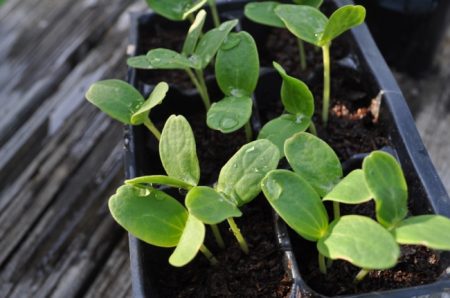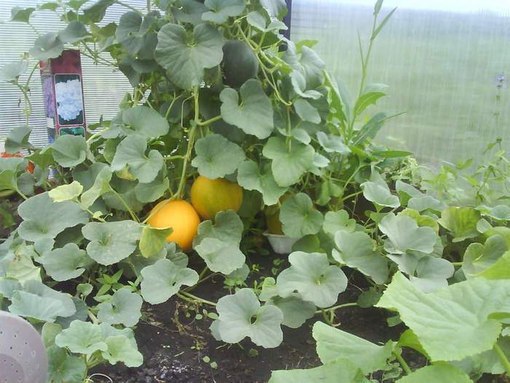 Not so long ago, only residents of the southern regions were able to grow melons. Thanks to the efforts of breeders today, you can independently grow this sweet fruit in every corner of the country.
Not so long ago, only residents of the southern regions were able to grow melons. Thanks to the efforts of breeders today, you can independently grow this sweet fruit in every corner of the country.
In order for the melon to yield good fruits and have time to ripen, when planting, it is necessary to take into account the climatic features of your region and follow the recommendations of the lunar calendar for 2018.
Content
Sowing seeds by region
Melon can be grown in most parts of the country only through seedlings. And only in regions with long and warm summers, seeds can be sown directly on the bed. But experienced gardeners to obtain an early crop grow melon seedlings, even in the southern regions.
Choosing the right sowing time for this southern fruit is not so simple. Melon culture is thermophilic and at temperatures below 15 ° C ceases to grow and develop. And cooling to 10 ° C is destructive for the culture. Therefore, it is important to sow melon so that when transplanting to a permanent place, the air temperature does not drop below 15 ° C throughout the growing season. At the same time, seedlings should not be overexposed at home, at 30-35 days of age they must be transplanted into open ground or a greenhouse. Otherwise, the plants begin to stretch, wither away and as a result will not be able to give a full crop. Also, do not forget that it takes 5-7 days for seed germination.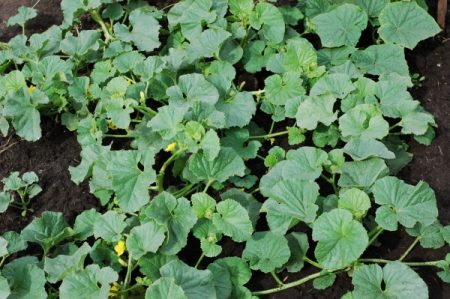
Based on these conditions, sowing dates for different regions are calculated:
Moscow region
The Moscow Region belongs to the zone of problem farming. Summer here can be both dry and warm, and cool with prolonged rains. Night frosts in the Moscow region cease after June 5-10. Suitable sowing dates in accordance with the climate of this area are:
- from May 10-15 to June 1-2 - for cultivation in open ground or a film greenhouse;
- from May 5-10 to May 20-25, for growing in polycarbonate greenhouses.
Since the climate is quite cold and summer does not last long, it is most advisable to choose melon varieties with a ripening period of 60-80 days. Do not strive to grow large fruits, they just do not have time to pour and ripen. It is best to opt for those varieties that are zoned specifically for the suburbs.
The state register recommends the following varieties for cultivation in climatic conditions of the middle strip, to which the Moscow Region belongs, Cinderella, Yukar, Caramel, Princess Svetlana.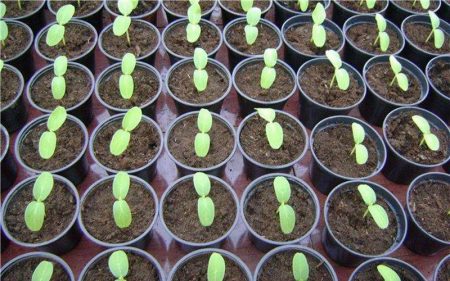
Krasnodar region
in the Krasnodar Territory, the most favorable conditions for growing melons. Summer is the longest period in this region. Nighttime temperatures above 15 ⁰C hold steady from the first of May to September. Therefore, you can start sowing in the following dates:
- in the south of the region - the third decade of March or the beginning of April;
- in the north and east - the first decade of April.
Under the weather conditions of this region, any kind of melon can be grown. But there are valuable varieties that can be cultivated in Russia exclusively in the conditions of the Krasnodar Territory. These are autumn-winter melons, with ripening periods of 95-100 days, very sweet, light, large. And melons with ripening periods of 100-110 days, weighing up to 30 kg, with a sugar content of up to 16% and perfectly stored in cool rooms. Such varieties include: Pineapple melon, Ethiopka, Honey Spas, Taman, Southerner.
Siberia
Siberia belongs to the zone of risky farming. Summer is short and unpredictable. Night air temperatures above 15 ⁰C usually last from mid-June to early August.Accordingly, the timing of sowing seeds for seedlings will be as follows:
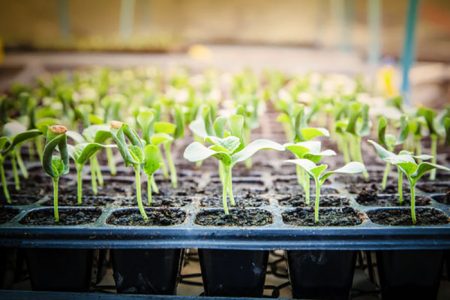
- from April 15 to the first of May - for cultivation on an open bed or with film shelters;
- from the last days of March to mid-April - for growing in polycarbonate greenhouses.
For the Siberian climate, melons of early and medium ripening are most suitable. Usually they are small-fruited, and this allows the fruit to fully ripen on the bush. However, to taste they are not at all inferior to large-fruited. The most suitable varieties for cultivation in Siberia are: Rannaya, Barnaulka, Lyubushka, Altai, Kolkhoznitsa, Lolita, Gentle, Rosinka. Early ripening varieties will yield crops already in July, varieties with average ripening dates in August.
Ural
Despite the fact that the Ural summer is very fleeting, it is quite possible to grow gourds. Of course, most often gardeners do this in greenhouses or mini-greenhouses. Melon can be grown in open ground only by planting ultra-mature varieties with a maturity of less than 60 days.
The optimal timing for sowing:
- from May 20 to the first days of June - for cultivation without shelters or under temporary film shelters;
- from the first days until mid-May - for growing in polycarbonate greenhouses.
Breeders recommend growing the following varieties in the Urals: Dream sybarite, Nectarine, Altai, Babor, Zimovka, Kolkhoznitsa 749 \ 753, Lesya, Original, Temryuchanka.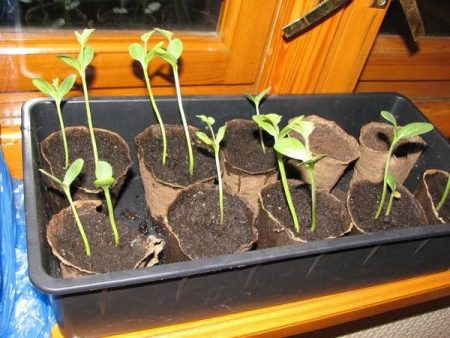
When planting melons, it is best not to dwell on one variety. And also do not rush to make a conclusion about the yield or taste of the fruit for one season. The best option would be to grow several bushes of different varieties each year. And by trial and comparison, choose a variety that gives a sweet and plentiful crop in a specific climate.
Choosing a lunar calendar landing date
Focus on the lunar calendar or not, everyone decides for himself. But a large degree of influence of the phases of the moon on plant growth has long been proven by science, and this is widely used by experienced gardeners. So, if you plant a plant on a growing moon, then growth and development will be much faster than when landing on a waning moon. But the new moon is a time completely unsuitable for planting plants, this noticeably shortens their life and affects the quantity and quality of the crop.
In accordance with the lunar calendar 2018, the best days for planting melons for seedlings are:
in March - from 19-24, 27-28;
in April - from 5-9; 20-24;
in May - from 4-9, 19-23.
It is not recommended to sow melon in the following days:
in March - from 1-3, 16, 30;
in April - from 15-17, 29, 30;
If for some reason you missed favorable days for planting a melon, then choose any other date, excluding coincidences with unfavorable periods. But it’s better to nevertheless prepare in advance for the sowing work and determine the appropriate planting date.
Ten Useful Melon Growing Tips
For successful melon cultivation, in addition to the recommendations of the lunar calendar and taking into account climatic conditions, it is good to use the following tips:
- Last year's melon seeds are not suitable for planting. From them grow plants that are not able to tie female flowers, respectively, and they will not be able to give fruits. Therefore, older, but up to five years ago, is used as seed material. The best option would be the seeds collected three years ago, they are the most active in bloom and bear fruit.
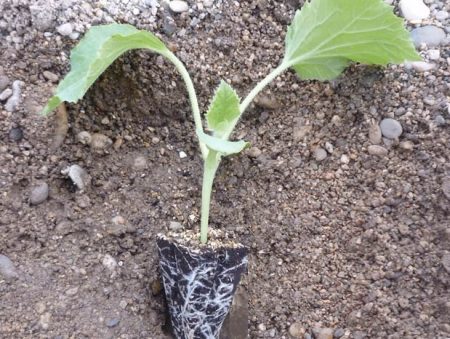
- Before planting, it is necessary to soak the seeds during the day. In this case, empty seeds unfit for planting.
- Best seedlings grow and develop in a special soil for pumpkin plants. It can be purchased at a specialty store or prepared on its own. To do this, in equal proportions mix garden soil, peat, humus. A small amount of sand is added to improve drainage.
- For a melon, as for all melons, a picking is unacceptable, therefore, sowing is carried out immediately in individual containers with a diameter of 7-10 cm.
- After seedlings, seedlings need a 12-hour daylight, so additional lighting must be provided. With a lack of light, the seedlings are very elongated and cease to develop normally.
- It is necessary to contain melon seedlings at a temperature not lower than 25 ° C. 10 days before the seedlings are planted in the soil, the temperature is gradually reduced to 16 ° C. Such hardening will help the plant adapt more easily to a new place and painlessly transfer the change of familiar conditions.
- Melon does not like an overabundance of moisture, so they water the seedlings as the soil dries. Watering is done exclusively with warm and settled water.
- So that transplanting into open ground was less painful, it is best to grow melon in peat pots. In this case, it will be possible to avoid contact with the root system and transplant seedlings together with the native earth lump. Decaying gradually, such pots additionally fertilize the soil.
- In a phase of 4-5 true leaves, a plant is formed for the first time. To do this, pinch the growth point, leaving 3 leaves on the young shoot. After this procedure, side shoots will begin to form actively. Of which only two of the strongest should be left afterwards.
- 12 hours before transplanting seedlings in open ground, it is recommended to water them abundantly.
Growing seedlings is perhaps the most important step for getting a natural melon dessert on your site. Given all the above recommendations, it can easily be done even with an inexperienced summer resident.


